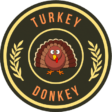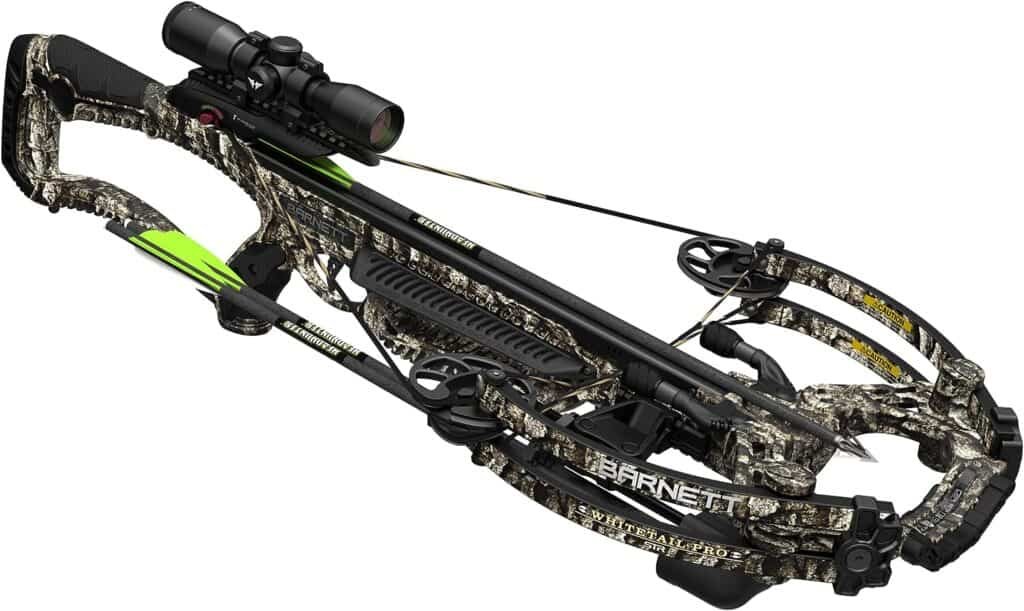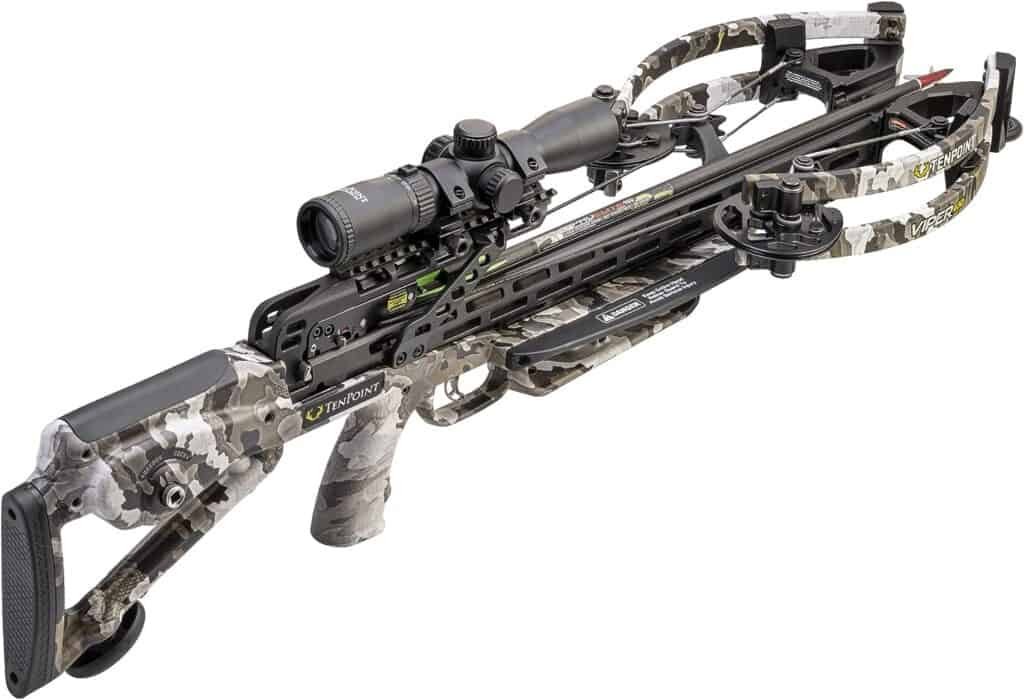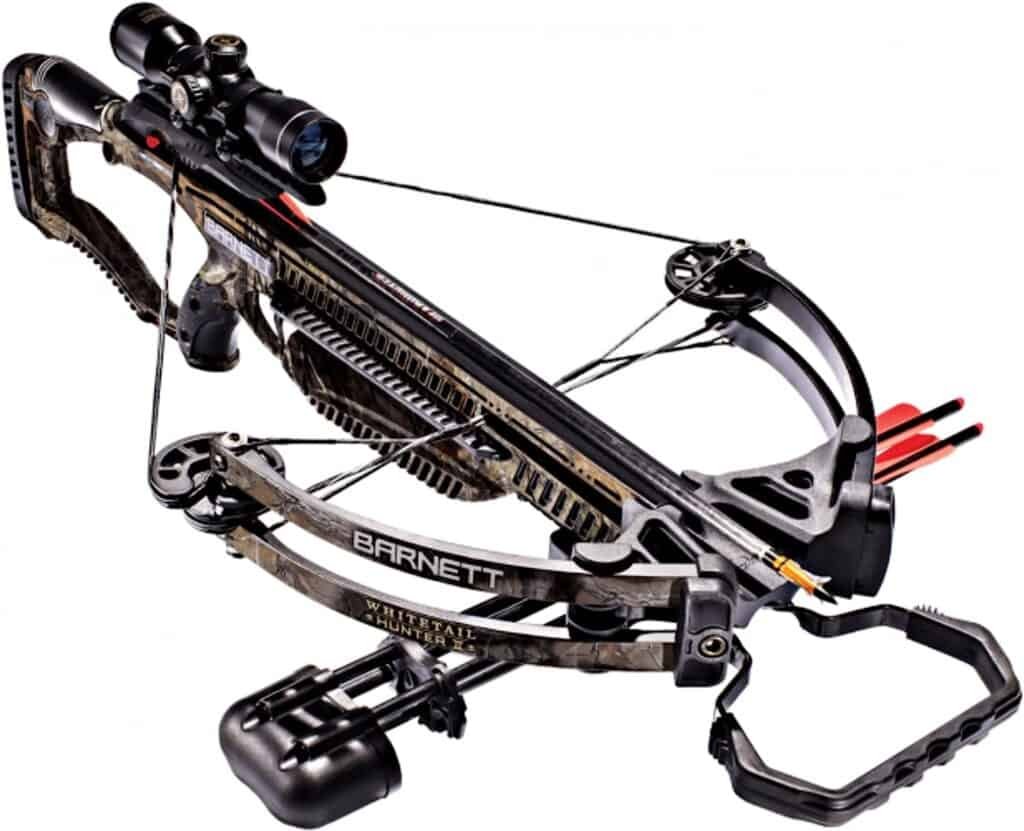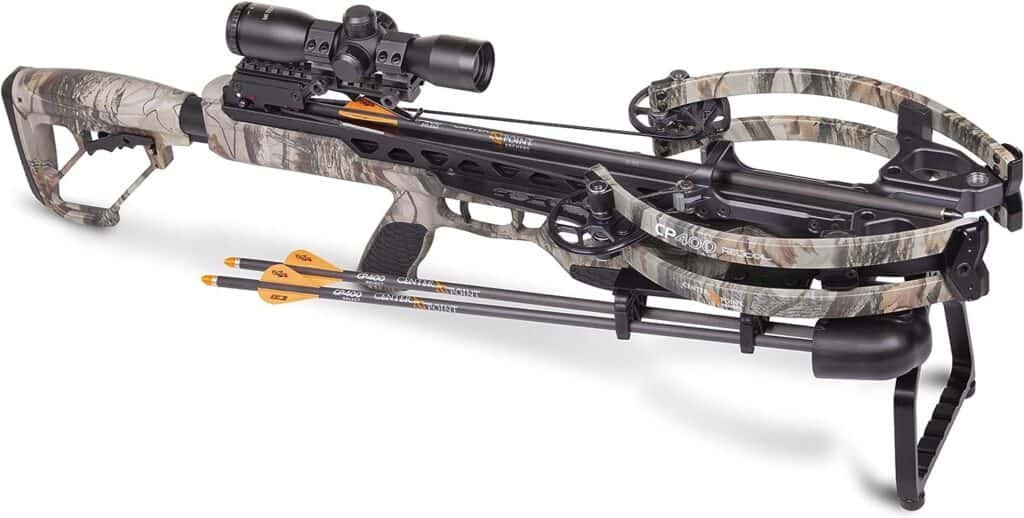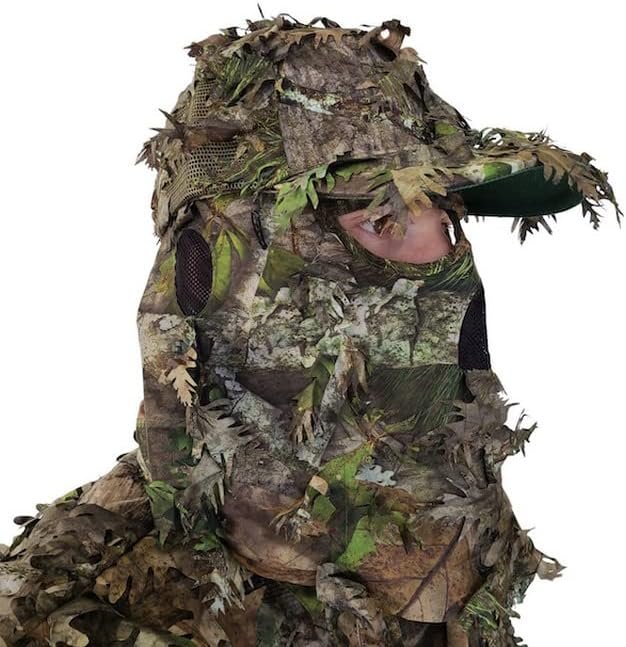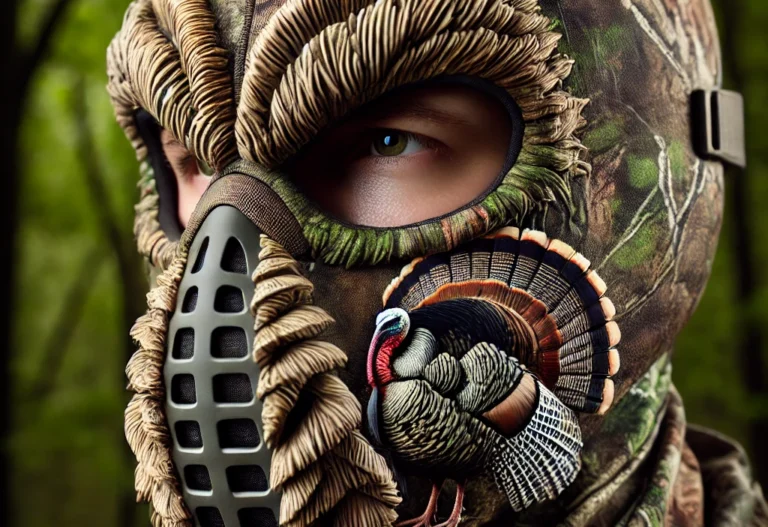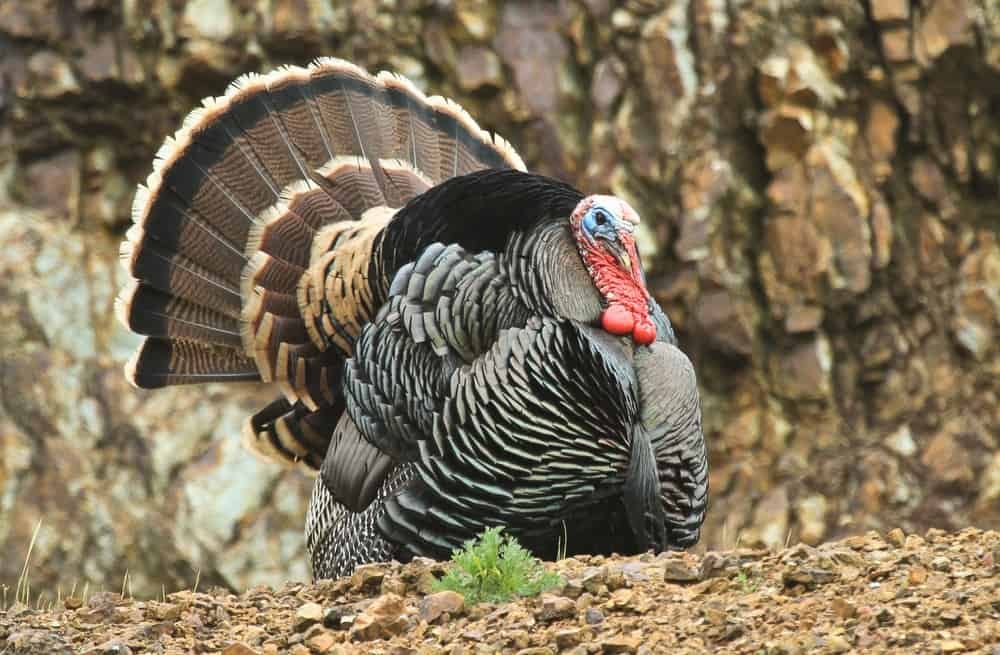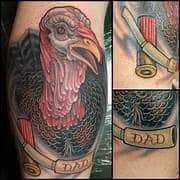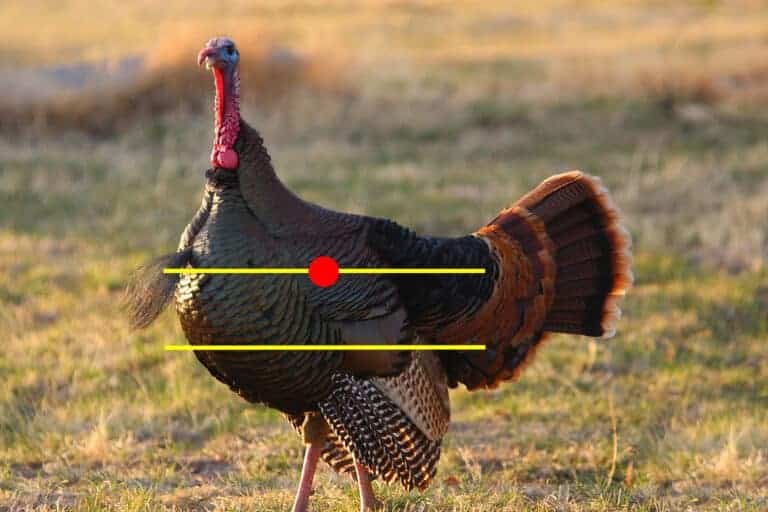Hunting Turkey With Crossbow – A New Approach to Thanksgiving
Did you even consider hunting turkey with crossbow? While the idea may seem strange initially, the principles of bow hunting are the same whether you seek deer or turkey. Let’s take a deep dive into hunting turkey with crossbow.
A Brief Overview of Hunting Turkey with Crossbow
For centuries, humans have been captivated by the allure of turkey hunting. What was once a necessary means for survival has become a cherished tradition and an adrenaline-fueled sport.
Hunters eagerly await each turkey season with hunger across North America, from wooded valleys to open prairies. Turkey hunting provides an opportunity to connect with nature and offers various benefits beyond the thrill of pursuing these wily birds.
It allows individuals to immerse themselves in serene environments while honing their skills as hunters and conservationists. Through strict adherence to ethical practices and regulations set forth by wildlife management agencies, turkey hunting becomes a responsible way to maintain healthy populations while enjoying all nature offers.
Introduction to Hunting Turkey With Crossbow
In recent years, crossbow hunting has gained popularity among enthusiasts seeking new challenges in pursuing turkeys. The crossbow’s ancient roots and modern advancements make it a formidable weapon that delivers precision shots over considerable distances. The advantages offered by crossbows are manifold.
Their design enhances accuracy compared to traditional bows due to their stock or shoulder mountings, which aid stability during aiming and release. Crossbows also possess higher draw weights than traditional bows without requiring extensive physical strength from the hunter.
This makes them accessible to individuals with varying levels of physical ability, broadening the appeal and inclusivity of the sport. Furthermore, crossbows offer a distinct advantage in terms of range and velocity.
Their flat trajectory and increased kinetic energy make them well-suited for longer shots, perfect for enticing turkeys within effective range while keeping a safe distance. In addition, their quieter release reduces the likelihood of spooking turkeys, increasing the chances of a successful hunt—just some advantages of hunting turkey with a crossbow.
Understanding Hunting Turkey with Crossbow
Overview of Turkey Species Commonly Hunted
When it comes to turkey hunting, there are several species that hunters commonly target. The most popular among them are the Eastern wild turkey (Meleagris gallopavo silvestris), the Rio Grande wild turkey (Meleagris gallopavo intermedia), and the Merriam’s wild turkey (Meleagris gallopavo merriami). Each species has its distinct characteristics and is found in different regions of North America.
The Eastern wild turkey, for instance, is the most abundant and widely distributed species, inhabiting the eastern half of the United States and parts of Canada. Known for its large size and dark plumage, it thrives in various habitats, including forests, agricultural areas, and swamps.
On the other hand, the Rio Grande wild turkey can be found primarily in the central regions of North America. It tends to prefer open woodlands and brushy areas near river valleys.
Detailed Explanation of Turkey’s Behavior During Different Seasons (Breeding, Nesting, etc.)
Understanding turkey behavior during different seasons is crucial for successful hunting. During breeding or “the mating season,” turkeys display unique behaviors in spring as they engage in courtship rituals. Male turkeys or gobblers become vocal as they emit deep gobbles to attract hens or female turkeys.
They also exhibit strutting behavior by puffing up their feathers and displaying their tail fans to impress potential mates. During nesting season, which follows breeding season, female turkeys or hens search for suitable nesting sites hidden within dense vegetation such as tall grasses or shrubs.
Hens lay a clutch of about 10-15 eggs over two weeks. The incubation period typically lasts around 28 days, during which the hen remains camouflaged and dedicated to protecting her nest.
Insight into Turkey’s Vocalizations and Their Significance in Hunting Turkey With Crossbow
Turkey vocalizations are vital for hunters to understand and utilize while pursuing these elusive birds. Gobbling is the most recognizable vocalization made by male turkeys.
It serves as a means of communication between males to establish territory and attract females. Mimicking gobbling sounds can grab the attention of nearby turkeys, potentially luring them closer.
Another important vocalization is the yelp, a versatile call used by both males and females. Hens use yelping sounds throughout the year for various purposes, such as maintaining contact with their brood or communicating their location to other turkeys.
By imitating yelps accurately, hunters can simulate turkey conversation and increase their chances of drawing in curious birds. In addition to gobbling and yelping sounds, there are numerous other turkey vocalizations that hunters should familiarize themselves with, including clucking, purring, cutting, and kee-kee runs.
Each sound has its context and significance in Turkey communication. By mastering these distinct calls through practice or using specially designed turkey calls, hunters can effectively communicate with turkeys in their natural language, enhancing their hunting success.
Understanding the behavior of different turkey species and their behaviors during various seasons provides invaluable insights for any dedicated turkey hunter. It allows them to adapt their hunting strategies accordingly and increases the chances of bagging a trophy gobbler or enjoying an exciting encounter with these magnificent birds in the wild.
Crossbow Selection and Preparation
Various Types of Crossbows Suitable for Hunting Turkey with Crossbow
When it comes to hunting turkey with crossbow, choosing the right type of crossbow is crucial. Two commonly used types are recurved crossbows and compound crossbows.
Recurve crossbows are known for their simplicity and reliability. They have a traditional design, with limbs that curve away from the shooter when the bow is unstrung. These lightweight and less complex crossbows make them popular among hunters who appreciate their ease of use.
On the other hand, compound crossbows offer more advanced technology and features. They utilize a system of pulleys or cams to generate more power and speed compared to recurve models.
Compound crossbows typically have higher draw weights, allowing for increased accuracy and longer shooting distances. However, they tend to be bulkier and heavier than recurve models.
It is essential to consider factors such as your personal preferences, physical capabilities, and hunting style when deciding between recurve or compound crossbows for turkey hunting. Ultimately, choosing a crossbow that feels comfortable in your hands will greatly contribute to your success in the field.
Factors to Consider When Hunting Turkey with Crossbow
When selecting a crossbow specifically for turkey hunting, there are several factors you should take into account. One crucial consideration is draw weight – the force required to cock the bowstring fully before shooting an arrow. Turkey hunters generally opt for draw weights between 150-175 pounds as this provides adequate power without sacrificing maneuverability in densely wooded areas.
Another vital factor is speed – how fast an arrow travels after being released from the bowstring. Speed affects both accuracy and penetration power.
For turkey hunting with a crossbow, aiming for speeds around 300 feet per second (fps) is optimal because it provides sufficient energy transfer upon impact while maintaining accuracy. Accuracy itself is paramount, especially when targeting the small vital areas of a turkey.
Pay attention to the crossbow’s design features that enhance accuracy, such as high-quality limbs and risers, adjustable stocks, and ergonomic grip handles. Additionally, consider the availability of accessories like scopes or red dot sights for improved target acquisition.
Importance of Proper Maintenance and Sighting-In Before the Hunt
Proper caring for your equipment is crucial once you have chosen a crossbow suitable for turkey hunting. Regular maintenance ensures that your crossbow functions optimally during crucial hunting moments. Clean all parts regularly using a soft cloth and ensure no debris accumulates in the trigger mechanism or rails.
Lubricate moving parts with manufacturer-recommended lubricants to minimize wear and maximize performance. Furthermore, sighting in your crossbow is essential before heading into the field.
This process involves adjusting the scope or sights so that your arrows hit where you aim consistently. Start by shooting at close distances (around 20 yards) and gradually move back while making necessary adjustments until you achieve accuracy at various ranges typically encountered during turkey hunting with crossbow.
Remember to carry spare strings, cables, bolts/arrows, broadheads, and other accessories in your hunting pack. Being adequately prepared ensures any issues can be quickly resolved if they arise during your hunting turkey with crossbow.
Choosing the appropriate crossbow type based on individual preferences and hunting style is key for successful turkey hunting with crossbow.
Evaluating factors such as draw weight, speed capabilities, and accuracy-enhancing features will help determine which crossbow best suits your needs as a hunter. Additionally, properly caring for your equipment through regular maintenance routines guarantees optimum performance when it matters most.
At the same time, sighting-in ensures precise shot placement at different distances encountered in the field.

Scouting for Turkeys
Techniques for identifying prime turkey habitats (roosting areas, feeding grounds)
When scouting for turkeys, it is crucial to understand their preferred habitats clearly. Turkeys are generally found in areas with open fields, meadows, and nearby woodlands, providing feeding and roosting opportunities. Look for signs of turkey activity, such as scratch marks on the ground where they have been searching for food.
Additionally, areas with abundant mast-producing trees like oak or beech can serve as prime feeding grounds for turkeys. These trees provide them with an essential food source during certain times of the year and should be prime targets when turkey hunting with crossbow.
Roosting areas are equally important to locate since turkeys spend their nights perched on trees to avoid predators. Ideal roosting sites are often found in large hardwood trees near water sources or ridgelines that offer safety and visibility.
Watch for droppings and feathers beneath roost sites as evidence of their presence. By identifying these key elements within your hunting area, you increase your chances of encountering turkeys during your hunt.
Utilizing trail cameras to monitor turkey movement patterns
Trail cameras have become indispensable tools in modern hunting practices, providing invaluable insight into wildlife’s movement patterns and behaviors. When strategically placed along known turkey travel corridors or near feeding areas, trail cameras capture photos or videos whenever they detect motion.
This allows you to establish patterns in turkey behavior, such as preferred times they visit specific locations or the routes they take while traveling. To effectively utilize trail cameras, position them at appropriate heights while ensuring a wide field of view that covers potential turkey hotspots.
Adjust settings based on lighting conditions and consider using features like time-lapse mode if desired. Reviewing the images these cameras capture regularly lets you gather valuable information about turkey activity in your hunting area, enabling you to refine your hunting strategy accordingly.
Tips for locating roosting sites and understanding their significance
Locating turkey roosting sites requires careful observation and attention to detail. One of the most effective ways is to scout during the early morning or late evening hours when turkeys fly up or down from their overnight perches.
Listen for their distinctive wing beats as they settle into trees, then follow the sound to pinpoint potential roosting sites. Turkeys often prefer tall hardwood trees with dense foliage for adequate cover and protection.
Roosting sites need to plan your hunt. Turkeys typically return to the same general area to roost every night, especially during breeding and nesting seasons.
By identifying these locations early on, you can strategize where to set up your ambush spot or plan alternative routes based on their movement patterns, from roosting areas to feeding grounds. Remember that being mindful of noise levels and avoiding direct disturbance of these sites ensures minimal disruption to turkey behavior, increasing your chances of hunting turkey with crossbow.
Through careful scouting techniques, utilization of trail cameras, and locating prime roosting spots while understanding their significance, you equip yourself with valuable knowledge that enhances your hunting skills when pursuing turkeys with a crossbow. These preparations significantly increase the probability of encountering these magnificent birds in their natural habitat while heightening the overall experience as an ethical hunter.
Perfect Ambush Spot – Hunting Turkey with Crossbow
Selecting an Ideal Location Based on Terrain and Cover
Understanding the terrain features and available cover is crucial when setting up an effective ambush spot for turkey hunting with crossbow. Turkeys frequent specific areas such as grassy fields, forest edges, or ridges.
By familiarizing yourself with their preferred habitats, you can increase your chances of success. Please look for terrain features that provide turkeys security and comfort.
Elevated spots like hills or ridges allow them to survey their surroundings while feeling safe from predators. Additionally, turkeys often frequented areas near water sources or feeding grounds.
Regarding cover, dense vegetation such as bushes, shrubs, or tall grass provides excellent concealment opportunities. Choose spots where you can blend seamlessly with the surroundings while maintaining a clear line of sight for your shot.
Building Natural Blinds or Using Portable Ground Blinds
Creating natural blinds is an artful way to remain hidden from the keen eyes of turkeys. Utilize surrounding elements like fallen trees, large rocks, or thick foliage to construct a makeshift blind that blends seamlessly into the environment.
Remember to leave enough space for maneuverability and unobstructed shooting lanes. If natural blinds are not feasible due to limited resources or terrain constraints, portable ground blinds offer an excellent alternative.
These lightweight shelters provide both concealment and mobility. You can position them strategically within close range of your selected ambush spot while considering factors such as wind direction and sun position for optimal concealment.
Strategies for Setting Up Decoys to Attract Turkeys Within Range
Decoys are crucial in attracting turkeys within range when hunting with a crossbow. The key is to set up decoys that mimic realistic turkey behavior and establish a visual lure for curious birds. You can position your decoys in an area that offers good visibility from various angles.
Place a hen decoy or multiple hens, as gobblers often follow them during breeding. Add Jake or strutting Tom’s decoy to create competition and provoke dominant behavior from incoming turkeys.
Consider adding motion through specialized devices or accessories that simulate subtle movements like feeding or stretching to make the decoys appear more natural. This can pique the interest of nearby turkeys and entice them to approach for a closer look.
Hunting Turkey with Crossbow – Tactics
Understanding Effective Calling Techniques (Yelping, Clucking) to Lure Turkeys Closer
Mastering effective calling techniques is essential when hunting turkey with a crossbow. Turkey calls are powerful tools to imitate the sounds of different vocalizations, attracting them within range. Yelping is one of the most fundamental and versatile calls used by hunters.
It mimics the series of notes produced by female turkeys and can be employed to initiate contact with both hens and gobblers. Clucking, on the other hand, replicates short, soft sounds made by feeding turkeys and can be used to reassure hesitant birds.
Experiment with diaphragm calls, box calls, slate calls, or even electronic callers to find which ones work best in your hunting environment. Remember that practice makes perfect when achieving realistic tones and cadence.
Exploring Various Stalking Methods such as Spot-and-Stalk or Still-Hunting when hunting turkey with crossbow
Stalking techniques offer an alternative approach for hunting turkey with a crossbow when traditional ambush methods prove challenging due to terrain limitations or uncooperative birds. Spot-and-stalk involves actively locating turkeys from afar before closing in on them quietly using natural covers such as trees or bushes.
Still-hunting, on the other hand, requires stealth and patience. It involves moving slowly and silently through turkey habitats while scanning the surroundings for any signs of movement.
This method is particularly effective during the nonbreeding seasons when turkeys are less vocal and more focused on feeding or roosting. Both techniques necessitate heightened situational awareness, excellent camouflage, and a deep understanding of turkey behavior to get within effective shooting range.
Tips for Shot Placement with a Crossbow to Ensure Ethical Kills
Shot placement ensures swift and ethical kills when hunting turkeys with a crossbow. Unlike firearms, crossbows require precise accuracy due to their shorter effective range. Aim for the vitals of the turkey, which are located in the chest area just above where the wing joints meet the body.
The goal is to hit both lungs or penetrate through vital organs for an ethical kill. Avoid taking shots at extreme angles that may result in deflected arrows or only grazing wounds.
Also, could you consider using broadheads specifically designed for turkey hunting? These broadheads typically have wider cutting diameters and unique features like blunt tips to increase lethality upon impact.
Hunting Turkey with Crossbow – Safety Considerations
Emphasizing the Importance of Wearing Blaze Orange
Safety should always be paramount when engaging in any form of hunting activity. One essential safety measure during turkey hunting is wearing blaze orange clothing or accessories to ensure visibility among fellow hunters within your vicinity.
Blaze orange is a visual signal distinguishing you from game animals like turkeys. It helps prevent accidental shootings by enabling other hunters to immediately recognize your presence in the field.
Highlighting Key Safety Rules When Hunting Turkey With Crossbow
Using a crossbow responsibly requires following critical safety rules:
- Keep your finger off the trigger until you are ready to shoot.
- Always point the crossbow in a safe direction.
- Only load the crossbow once you are ready to hunt in your hunting area.
- Identify your target and what is beyond before shooting.
- Treat every crossbow as if it is loaded, even when not.
Following these safety guidelines can ensure a safe and enjoyable hunting experience while minimizing the risk of accidents or injuries when hunting turkey with crossbow.
Conclusion – Hunting Turkey with Crossbow
Hunting turkey with crossbow is an exciting venture that requires careful planning, knowledge of turkey behavior, and mastery of setting up the perfect ambush spot and employing effective hunting tactics. Selecting an ideal location based on terrain features and available cover maximizes your chances of success. Building natural blinds or using portable ground blinds helps maintain concealment while providing mobility.
Strategies for setting up decoys attract turkeys within range by creating visual lures. Understanding effective calling techniques, exploring stalking methods, and practicing accurate shot placement with a crossbow enhance your chances of achieving ethical kills.
Remember that safety should always be prioritized during any hunting expedition. Blaze orange ensures visibility among fellow hunters, reducing the risk of accidents when hunting turkey with crossbow.
Additionally, adhering to key safety rules when handling a crossbow is essential for a secure environment. So venture into the wild with confidence armed with this knowledge and enjoy the thrilling experience of hunting turkey with crossbow while ensuring efficiency and safety throughout your journey!
Barnett Whitetail Pro STR Crossbow, with 4x32mm Multi-Reticle Scope, Arrows, Lightweight Quiver
- Step-Through Riser (STR) design.
- Speeds up to 400 fps.
- Draw weight: Approximately 165 lbs.
- Power stroke: Roughly 16.375 inches.
- 4x magnification scope.
- 32mm objective lens.
- Multi-reticle design.
- Includes 20-inch headhunter arrows.
- Easy attachment lightweight quiver.
- Quiver holds multiple arrows securely.
TenPoint Viper 430 Crossbow - 430 FPS - Includes RangeMaster 100 Scope + ACUslide Silent Cocking & Safe De-Cocking System
- 430 FPS speed.
- RangeMaster 100 Scope included.
- ACUslide Silent Cocking System.
- ACUslide Safe De-Cocking System.
- Compact design.
- Precision aluminum rail.
- Quiet performance.
- Improved accuracy.
- Integrated string stop system.
- Designed for versatile hunting scenarios.
Barnett Whitetail Hunter II Crossbow
- Speeds up to 350 fps.
- Draw weight: 150 lbs.
- Power stroke: 12.5 inches.
- Lightweight: 6.4 lbs.
- TriggerTech Frictionless Release Technology.
- Anti-Dry Fire (ADF) trigger system.
- Soft-Lok floating bristle arrow retainer.
- Comes with 4x32mm multi-reticle scope.
- Designed for various game sizes.
- Enhanced safety features.
CenterPoint Archery CP400 Crossbow AXCV200TPK Powered By Helicoil Technology
- Powered by Helicoil Technology.
- Speeds up to 400 fps.
- CNC machined cam system.
- Folding stirrup for compact design.
- Anti-dry fire and auto safety.
- Adjustable tactical stock.
- Narrow axle-to-axle width.
- Aluminum rail for precision shooting.
- Lightweight: 7.1 lbs.
- Silent cocking system.
KingsArchery Crossbow Pistol Self Cocking 80 LBS with Adjustable Sights
- Self-cocking mechanism.
- 80 lbs draw weight.
- Adjustable sight system.
- Speeds up to 165 fps.
- Durable fiberglass construction.
- Compact and lightweight design.
- Features safety lock mechanism.
- Includes three aluminum crossbow bolts.
- Ideal for both small game hunting and target practice.
- Easy-to-use and maintain.
This Donkey Has Your Arse Covered
At TurkeyDonkey.com, we understand how overwhelming it can be to navigate the vast array of choices to find the best turkey binoculars. That’s why our dedicated team invests countless hours into meticulous research, scouring forums, and analyzing consumer reviews. We then compile this valuable information into concise and informative comparisons.
Join the thousands of satisfied customers who have relied on TurkayDonkey.com to make informed buying decisions. We are committed to helping our readers spend their hard-earned money wisely by assisting them in finding the perfect product that suits their needs. Experts conduct our reviews independently, and our shopping recommendations are driven by reliable data, empowering you to find the ideal binoculars that matches your requirements.
By leveraging user data, we gain insights into decision-making processes, enabling us to present each user with the best products tailored to their specific or general needs. We continuously update our content, searching for new merchants and products to compare.
Disclosure: Our website contains affiliate links, which means we may receive compensation if you purchase from websites we recommend. We test and review these products independently, and we do not accept free products or incentives in exchange for positive reviews. Any opinions expressed here are our own.
